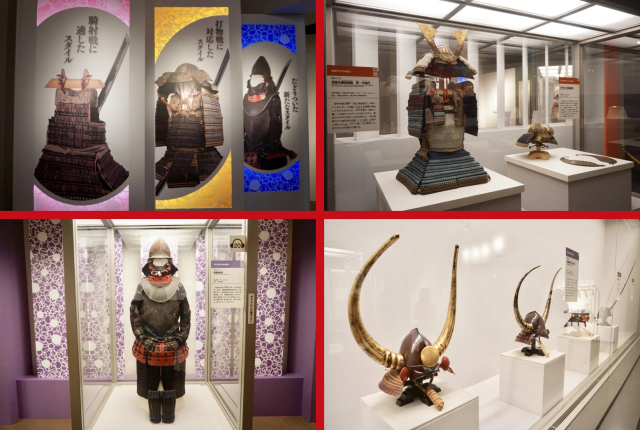
Samurai fought on the field of battle for a thousand years, and during that time their arms and armor went through a fascinating evolution.
Just about everyone can form a mental image of what a samurai looks like when he’s headed into battle. He’s got a single-edged, curved sword, lamellar armor, and probably a helmet with crests, horns, or some other kind of cool ornamentation, right?
But the era of the samurai lasted for over 1,000 years, and during that time there were changes in technology, military strategy, and even fashion. So just like the clothes you wear and the phone you use now are different from the ones your parents and grandparents did, samurai arms and armor evolved with time.
That evolution is one of the themes of Samurai: The Beauty and Pedigree of Warriors, an exhibition currently being held by the Fukuoka City Museum. 147 pieces of samurai armor and weaponry are on display, with more than half officially designated as national treasures due to their historical significance. Ordinarily photography is prohibited, but the museum granted us special permission to bring these images to you, just in case you can’t make it to Fukuoka between now and November 4, when the exhibit ends.
Let’s start by talking about armor. In the Heian period (which lasted from 794 to 1185), warfare in Japan was primarily conducted by warriors of comparatively highborn birth, who engaged each other on horseback in the open field by firing arrows at one another as they rode.
Since the horse was the one doing most of the mobility work, weight wasn’t much of a concern, and the torso section alone of a suit of Heian period armor could weigh as much as 20 kilograms (44 pounds), and separately added shoulder protectors would add about three kilograms each. The armor was loose-fitting around the wearer’s mid-section and had large openings at the armpits to allow for easy nocking of arrows and aiming of the bow.
But as the years went by, construction techniques improved, commerce started to develop, and cities started to spring up, often with a local warlord’s samurai castle in the center. These strongholds became high-priority military targets, and since cavalry are of very little use in waging or fighting off a siege, armor needed to become lighter, since the samurai were now fighting on foot and couldn’t rely on a horse’s load-carrying stamina.
More melee combat in the Genpei and Kamakura periods (1180-1333) also meant that gaps and openings in the armor had to get smaller, since an enemy standing inches away from you can fit the point of their blade into an unprotected space more easily than someone firing an arrow from the other side of the skirmish.
▼ As armor got more form-fitting, the waists were brought in, giving samurai on the field of battle an almost hourglass-like figure.
Remember how we said that in the Heian period, samurai combat was primarily a wealthy man’s profession? That started to change with the shift to on-foot combat, since there was no longer a need to supply as much of the army with costly-to-care-for horses. Once the Muromachi and Sengoku periods (1336-1600) came about, a large portion of the combatants were ashigaru, essentially farmers and other commoners converted into foot soldiers in the service of their local liege lord. In order to equip much larger armies, armor construction had to become cheaper and simpler. Armorers started combining what were previously multiple pieces of a suit into composite pieces, like the kote, a combination gauntlet and armored sleeve.
However, the shift to simpler armor design created a problem for the high-ranking samurai: it didn’t look as cool. Fewer separate parts and plates meant less need to tie components together with cords, but the coloring and design of those cords had long been a way for samurai to distinguish themselves visually on the field. So what did samurai bigwigs do instead? They started commissioning more and more elaborate helmets.
Granted, a lot of these weren’t particularly practical, since they were cumbersome and top-heavy. But remember, at this point there were ashigaru to do a lot of the gritty up-close fighting, and high-ranking samurai were primarily acting as generals making tactical decisions and giving orders, not personally crossing swords with enemy forces.
Late in the Sengoku period, Japan was engaging in an increasing level of trade with foreign merchants and missionaries, which resulted in nambando gokuso, or “southern barbarian armor” (“southern barbarians” being a term for Europeans at the time, due to their presence in the Kyushu region, at the southern end of Japan).
Nambando gokuso is kind of like the tempura of samurai armor, in that it’s a mix of Western and Japanese elements. This suit here, for example, has a European-style breastplate made of a large single piece of metal, as well as gorget over the collarbone and upper chest, but it also uses lamellar for the skirts and throat guard, as well as kote gauntlet sleeves and strap-on suneate shin guards.
Nambando Gokuso had only a brief battlefield presence in Japan, as it wouldn’t be long until the Battle of Sekigahara, which took place in 1600, solidified the power of the Tokugawa clan enough for it to establish a shogunate that lasted nearly three centuries. During that time, Japan had relatively few military conflicts until the modern era, at which point armor itself had become a thing of history.
Of course, it wasn’t just the defensive aspect of samurai combat that evolved over time. Katana also changed significantly throughout Japanese history, and we’ll be back soon to explain how in the second part of this series.
Museum information
Fukuoka City Museum / 福岡市博物館
Address: Fukuoka-ken, Fukuoka-shi, Sawara-ku, Momochihama 3-1-1
福岡県福岡市早良区百道浜3丁目1-1
Open 9:30 a.m.-5:30 p.m.
Closed Mondays
Admission 1,500 yen (US$14)
Museum website
Exhibition website
Photos ©SoraNews24
● Want to hear about SoraNews24’s latest articles as soon as they’re published? Follow us on Facebook and Twitter!
[ Read in Japanese ]


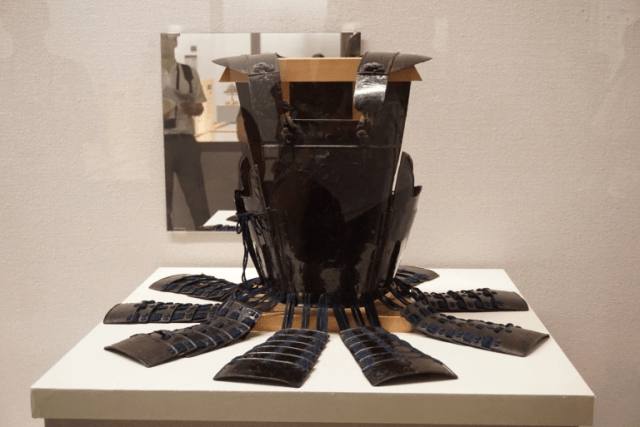
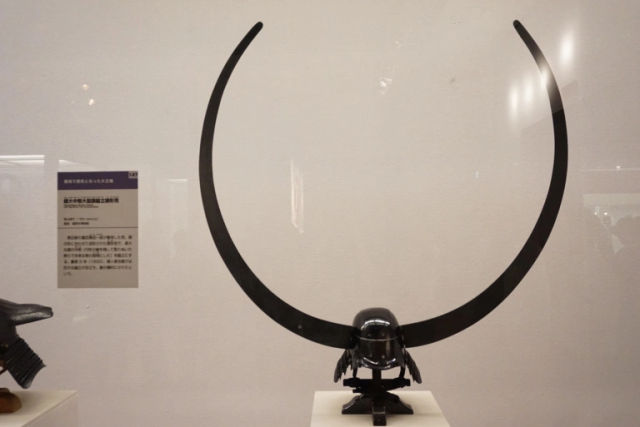
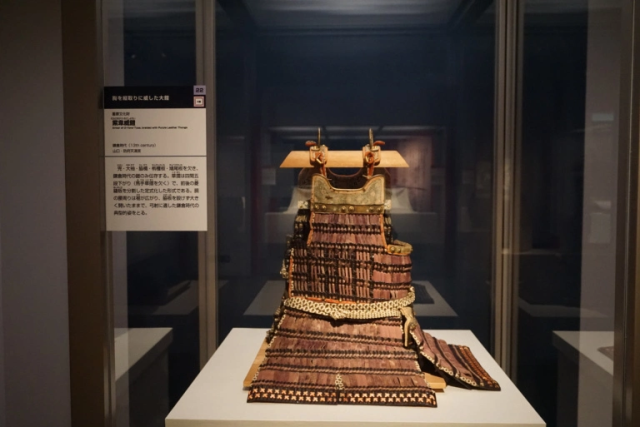

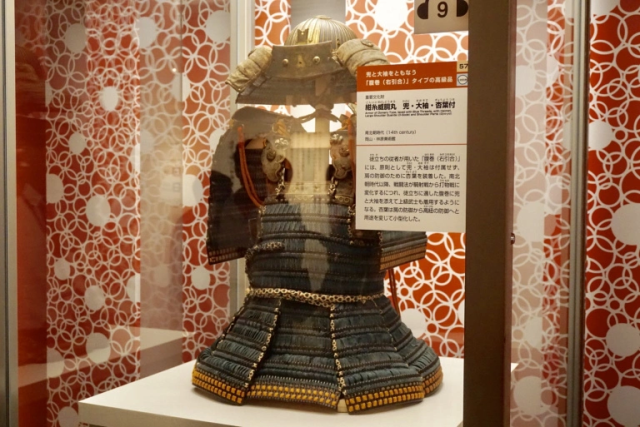
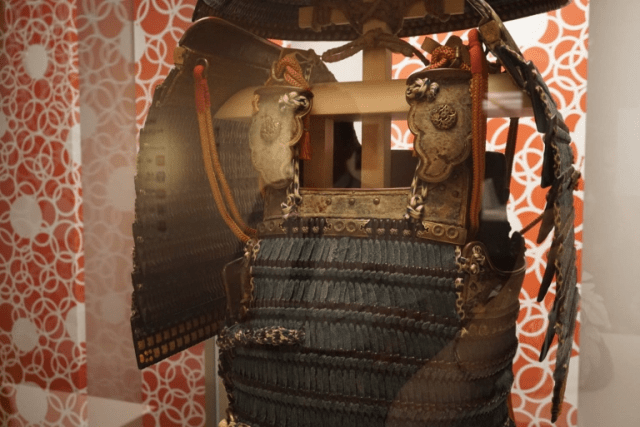
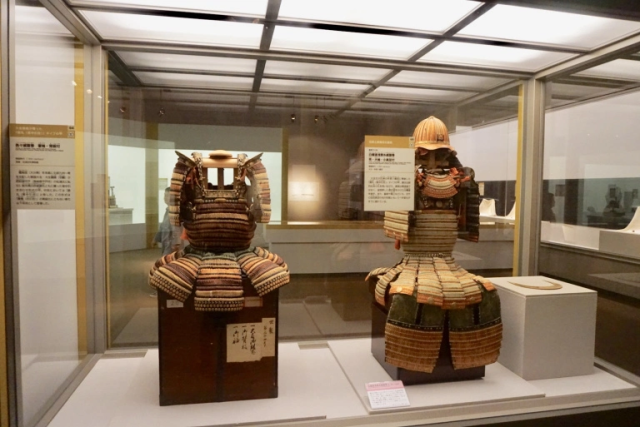
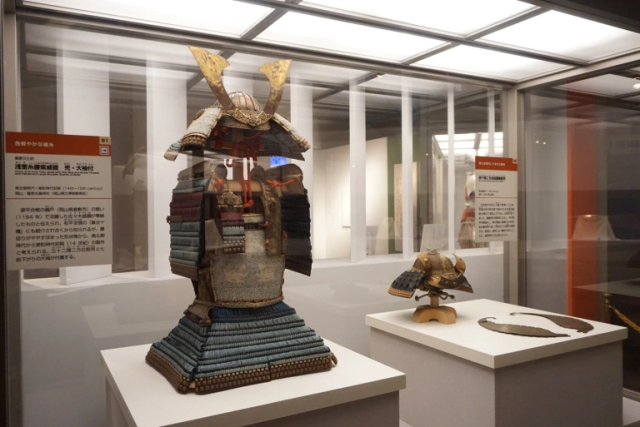


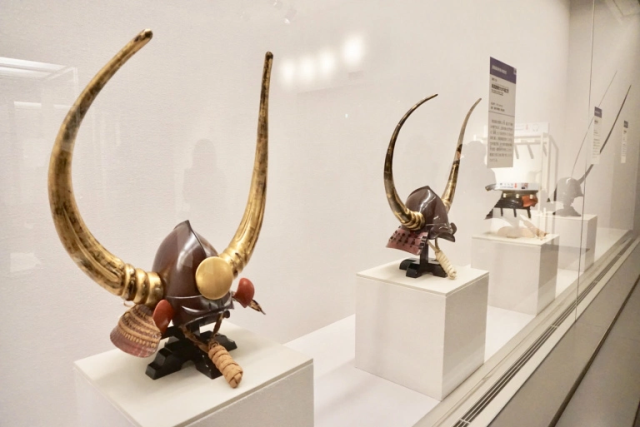
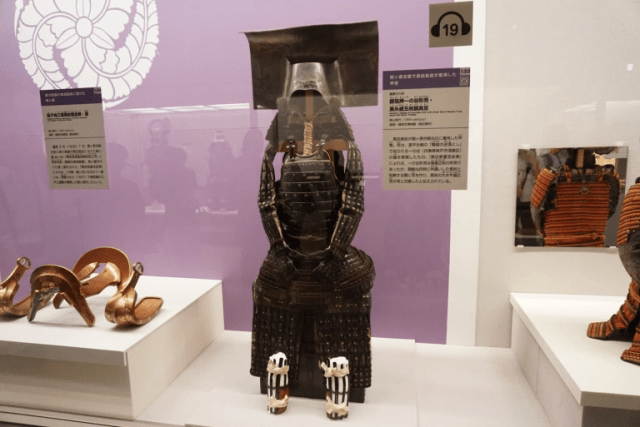
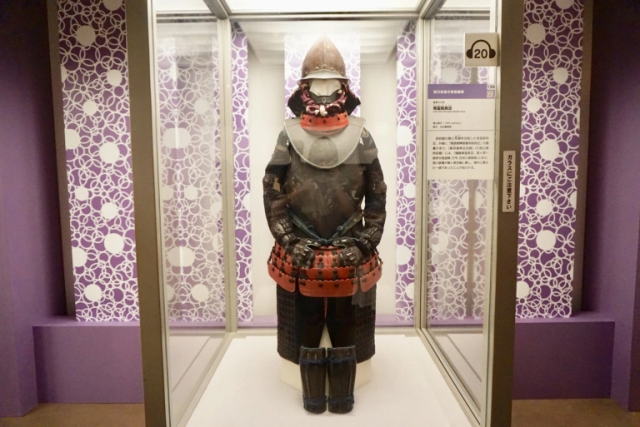
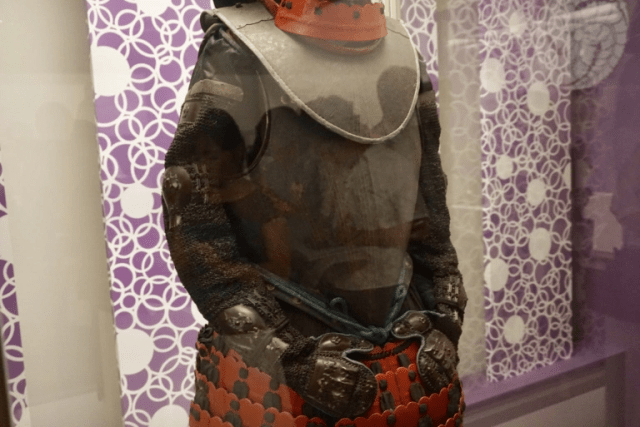
 Detailed explanation of Japanese armor?!? Show me!
Detailed explanation of Japanese armor?!? Show me! Samurai fashion guide – Should you wear your sword blade-up or blade-down?
Samurai fashion guide – Should you wear your sword blade-up or blade-down? Awesome Samurai Armor Hoodies are looking to conquer the whole world/keep you warm
Awesome Samurai Armor Hoodies are looking to conquer the whole world/keep you warm KFC’s Colonel Sanders is becoming a samurai in Japan this week
KFC’s Colonel Sanders is becoming a samurai in Japan this week Tokyo’s new samurai photo studio sends you to Japan’s feudal era with awesome digital backdrops
Tokyo’s new samurai photo studio sends you to Japan’s feudal era with awesome digital backdrops Japan’s new difficult-to-drink-from beer glass protects your liver, but it’s a brutal experience
Japan’s new difficult-to-drink-from beer glass protects your liver, but it’s a brutal experience New Pokémon ice cream, dessert drinks, and cool merch coming to Baskin-Robbins Japan【Pics】
New Pokémon ice cream, dessert drinks, and cool merch coming to Baskin-Robbins Japan【Pics】 New samurai glasses are Japan’s latest weird must-have souvenir
New samurai glasses are Japan’s latest weird must-have souvenir Come play hide-and-seek on a deserted Japanese island this August and November
Come play hide-and-seek on a deserted Japanese island this August and November Nintendo history you can feel – Super NES, N64, and GameCube controllers become capsule toys
Nintendo history you can feel – Super NES, N64, and GameCube controllers become capsule toys Demon Slayer: Kimetsu no Yaiba gets new roller coaster attractions and food at Universal Studios Japan
Demon Slayer: Kimetsu no Yaiba gets new roller coaster attractions and food at Universal Studios Japan Doraemon found buried at sea as scene from 1993 anime becomes real life【Photos】
Doraemon found buried at sea as scene from 1993 anime becomes real life【Photos】 Infographic shows how working culture differs across the globe
Infographic shows how working culture differs across the globe Hello, cosmetics! Clinique teams up with Hello Kitty this summer for first-time collaboration
Hello, cosmetics! Clinique teams up with Hello Kitty this summer for first-time collaboration Japan’s new canned chu-hai with fresh lemon slice: disappointing gimmick or drink revelation?
Japan’s new canned chu-hai with fresh lemon slice: disappointing gimmick or drink revelation? “The most Delicious Cup Noodle in history” – Japan’s French Cup Noodle wins our heart【Taste test】
“The most Delicious Cup Noodle in history” – Japan’s French Cup Noodle wins our heart【Taste test】 Starbucks releases a cute Frappuccino and Unicorn Cake…but not in Japan
Starbucks releases a cute Frappuccino and Unicorn Cake…but not in Japan Kyoto Tower mascot termination reveals dark side behind cute Japanese characters
Kyoto Tower mascot termination reveals dark side behind cute Japanese characters McDonald’s Japan’s Soft Twist Tower: A phantom ice cream only sold at select branches
McDonald’s Japan’s Soft Twist Tower: A phantom ice cream only sold at select branches Yabai Ramen: What makes this Japanese ramen so dangerous?
Yabai Ramen: What makes this Japanese ramen so dangerous? Finally! Nintendo Japan expands Switch 8-bit controller sales to everybody, Online member or not
Finally! Nintendo Japan expands Switch 8-bit controller sales to everybody, Online member or not Japanese government wants to build luxury resorts in all national parks for foreign tourists
Japanese government wants to build luxury resorts in all national parks for foreign tourists To combat declining birth rate, Japan to begin offering “Breeding Visas” to foreigners
To combat declining birth rate, Japan to begin offering “Breeding Visas” to foreigners 10 things you should buy at 7-Eleven in Japan
10 things you should buy at 7-Eleven in Japan Studio Ghibli releases anime heroine cosplay dresses that are super comfy to wear
Studio Ghibli releases anime heroine cosplay dresses that are super comfy to wear Woman charged for driving suitcase without a license in Osaka
Woman charged for driving suitcase without a license in Osaka Studio Ghibli unveils My Neighbour Totoro miniature house model
Studio Ghibli unveils My Neighbour Totoro miniature house model Kyoto experiencing problems with foreign tourists not paying for bus fares, but not on purpose
Kyoto experiencing problems with foreign tourists not paying for bus fares, but not on purpose Fighting mild hunger with a Japanese soda that turns into jelly in the stomach【Taste test】
Fighting mild hunger with a Japanese soda that turns into jelly in the stomach【Taste test】 Studio Ghibli’s Howl’s Moving Castle tapestry unveiled in Japan for first time
Studio Ghibli’s Howl’s Moving Castle tapestry unveiled in Japan for first time McDonald’s new Happy Meals offer up cute and practical Sanrio lifestyle goods
McDonald’s new Happy Meals offer up cute and practical Sanrio lifestyle goods Sales of Japan’s most convenient train ticket/shopping payment cards suspended indefinitely
Sales of Japan’s most convenient train ticket/shopping payment cards suspended indefinitely Sold-out Studio Ghibli desktop humidifiers are back so Totoro can help you through the dry season
Sold-out Studio Ghibli desktop humidifiers are back so Totoro can help you through the dry season Japanese government to make first change to romanization spelling rules since the 1950s
Japanese government to make first change to romanization spelling rules since the 1950s Foreigner’s request for help in Tokyo makes us sad for the state of society
Foreigner’s request for help in Tokyo makes us sad for the state of society Ghibli founders Toshio Suzuki and Hayao Miyazaki contribute to Japanese whisky Totoro label design
Ghibli founders Toshio Suzuki and Hayao Miyazaki contribute to Japanese whisky Totoro label design Tokyo’s most famous Starbucks is closed
Tokyo’s most famous Starbucks is closed Princesses, fruits, and blacksmiths: Study reveals the 30 most unusual family names in Japan
Princesses, fruits, and blacksmiths: Study reveals the 30 most unusual family names in Japan Foreign tourists pick the top 10 must-visit museums in Japan
Foreign tourists pick the top 10 must-visit museums in Japan This hotel has one of the coolest katana collections in Japan, and admission is totally free【Pics】
This hotel has one of the coolest katana collections in Japan, and admission is totally free【Pics】 History’s largest force of Samurai Colonel Sanders deploying to KFC Japan branches
History’s largest force of Samurai Colonel Sanders deploying to KFC Japan branches Samurai Ninja Museum Tokyo With Experience is true to its name, lets you slice with real katana
Samurai Ninja Museum Tokyo With Experience is true to its name, lets you slice with real katana Samurai Studio: Tokyo’s new photo studio where you can get your picture taken in samurai armor
Samurai Studio: Tokyo’s new photo studio where you can get your picture taken in samurai armor Samurai Studio is open and we were the first in line!【Photos】
Samurai Studio is open and we were the first in line!【Photos】 Women, gamers, and foreigners all show up to be samurai for a day at Sengoku battle reenactment
Women, gamers, and foreigners all show up to be samurai for a day at Sengoku battle reenactment This amazing suit of samurai armor is made of five-yen coins, and you can make your own too【Pics】
This amazing suit of samurai armor is made of five-yen coins, and you can make your own too【Pics】 Samurai armor for pets turns your animal companions into adorable dogs and cats of war【Photos】
Samurai armor for pets turns your animal companions into adorable dogs and cats of war【Photos】 A roundup of some of this year’s best “Samurai Sanders”: KFC’s mascot in samurai armor【Photos】
A roundup of some of this year’s best “Samurai Sanders”: KFC’s mascot in samurai armor【Photos】 Get your battle armor ready for the interactive “hottie” Samurai & Ninja Show coming to Tokyo
Get your battle armor ready for the interactive “hottie” Samurai & Ninja Show coming to Tokyo Scholars confirm first discovery of Japanese sword from master bladesmith Masamune in 150 years
Scholars confirm first discovery of Japanese sword from master bladesmith Masamune in 150 years We visit the awesome new Samurai Museum in Shinjuku【Photos】
We visit the awesome new Samurai Museum in Shinjuku【Photos】 Katana coasters! Samurai sword tableware brings bushido to your home
Katana coasters! Samurai sword tableware brings bushido to your home Samurai in full armor doing extreme sports has passersby, internet watching in awe【Video】
Samurai in full armor doing extreme sports has passersby, internet watching in awe【Video】 Impress your Japanese history professor with this T-shirt
Impress your Japanese history professor with this T-shirt
Leave a Reply